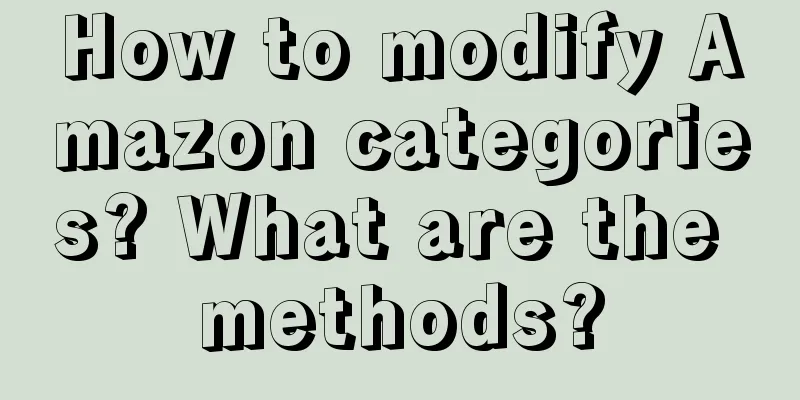Marketing is changing, and so must the way CMOs spend money

There is a saying that goes “where your money is, your heart is”, and this also holds true in the marketing industry. I have said before that China's marketing has changed dramatically, and the companies that have performed well have fully embraced the global structural transformation of the Marketing 3.0 era. In layman's terms, CMOs' ideas about spending money have also changed with the times. This statement is supported by survey data. Last year, CEIBS conducted a large survey of alumni who participated in the Chief Marketing Officer (CMO) course and found that more and more companies are starting to increase the proportion of marketing budgets towards 2024. Among them, 65% of the B2C product companies surveyed planned to increase their marketing budgets, which is much higher than the overall level, which actually shows the determination of CMOs to seek growth. So where exactly is all this money spent? The survey report said that in fiscal year 2023, B2C companies spent more money on interest/short video e-commerce, content e-commerce and private domain. In fiscal year 2024, 60% of companies will increase R&D expenses for products/services; 28% of companies will reduce public relations expenses; 26% of companies will reduce advertising expenses; and 22% of companies will reduce marketing team expenses. The trend of spending is actually consistent with what I summarized in "Let me be frank, China's marketing has changed dramatically": Brand business scale = population mental penetration rate * population LTV * population fission rate. Increasing product/service R&D expenses indicates that companies do not want to continue involution and hope to develop new products to increase revenue and profits, investing in the healthy development of the company rather than relying on price wars to maintain temporary market share. In terms of controlling expenses for public relations, advertising and marketing teams, 58% of companies do not even spend money on traditional media, indicating that the old marketing era of one slogan, one KV, and one TVC is no longer applicable. When the incremental market turns into stock market, if companies want to pursue increased revenue and profits, their marketing budgets must also change from the previous extensive investment based on abundant financial resources to more refined operations and product promotion for the target groups with greater emphasis on product effectiveness. So how should the budget be spent in a more certain and scientific way? I have actually been discussing this difficult problem with brands and platforms. This time when I served as a judge at Xiaohongshu's Grass-Planting Awards, my biggest feeling was that we are already on the right track. In the past, there have always been two inherent mindsets in marketing: the first is traffic logic and dividing categories, and the second is competition in creativity, which is out of touch with business. Many of the grass-roots cases I saw this time have broken out of the old thinking framework. More and more CMOs are beginning to choose to use grass-roots content, scientific business tools and solutions to allow products, brands, businesses and users to grow from the people-oriented soil of Xiaohongshu. For example, the "Shishi Ruyi" glutinous rice balls that swept the screen during the Lantern Festival this year, the lululemon three-grid down jacket that set off a new trend in dressing, and the Atour Planet's Deep Sleep Pillow PRO that took a different approach to the non-rolling pillow category and entered the sleep market, etc. When talking about content promotion this year, everyone has a consensus: content cannot just remain as creativity, it needs to be combined with tools to become a business. How to understand business? It should be an everlasting process, not just a wave of harvest or the creation of a hit product, but a long-term and healthy growth. Therefore, more and more CMOs are beginning to pay attention to how to use the tools provided by Xiaohongshu to understand the crowd, how to better set the delivery target (you can refer to the industry level and the penetration level of similar products to set the target), how to scientifically break down the budget (you can calculate the total budget in one click based on the penetration target, and recommend the budget ratio based on the historical delivery combination efficiency), and make real-time adjustments and optimizations. In other words, through Xiaohongshu's marketing products and tools, companies can solve the problems of how much to invest and when to follow up, so that every penny of the budget is more worthwhile. Judging from the data, these investments have also received due returns. On Xiaohongshu, 1,000 SPUs have achieved growth against the trend, and the GMV growth rate far exceeds the overall market. Among them are fast-moving consumer goods such as beauty and food, as well as durable consumer goods such as automobiles and home appliances. The investment in some products is actually similar to that in previous years, but adjustments have been made in strategy and play, and profits have improved, achieving high-quality growth. These brands have some characteristics in how they spend money. I have summarized them for CMOs to refer to. 01 Invest in super small content and accumulate a little wisdomI mentioned a formula earlier: Brand business scale = population mental penetration rate * population LTV * population fission rate. How to penetrate the minds of the crowd? It is no longer effective to tell everyone the same words as in the past. What brands need now is to invest in 10,000 sets of super small content to cultivate a small mind. This is mainly because the new generation of consumers are not so superstitious about the information on authoritative platforms. What is generally recognized as good may not necessarily be suitable for them. They buy things because "I like it and it is related to me." Therefore, the first thing CMOs need to check is to transform "selling point thinking" into "buying point thinking", and think from the perspective of consumers about what kind of consumer tasks the product can solve. Atour Planet's path to creating hit products is worth learning from and referring to. During last year's Double 11, their Deep Sleep Pillow PRO sold over 200 million yuan online through all channels. During this year's 618, Atour Planet sold another 170,000 summer quilts. As an industry challenger, how does it stand out from a number of mature home furnishing brands? I found that the secret of its success is to jump out of the pillow category and create a lot of grass notes on Xiaohongshu to hit the "deep sleep" mentality. Consumers search for pillows not because they really care about pillows, but because they hope to have high-quality sleep. The target audience is also very precise. Xiaohongshu has 20 major lifestyle groups, and Atour Planet focuses on lifestyle groups such as all-round life experts and nest-building youth. For example, mothers and babies are the groups that need a good night's sleep the most. It further refines the audience into health-sensitive mothers, sensitive skin mothers and new mothers, and then successfully enters the sleep market around user buying points such as "babies dream a lot and wake up easily" and "the whole family sleeps together, and the baby does not kick the quilt", instead of competing in the daily home furnishing market. With the selling point mentality, you will feel that the market is already saturated, and it seems that there is only one way out: internal circulation. But when you open the crowd and look at the scene, you will find that there is a vast new world. So how do you find buying points? I think it is most effective to start from the user's search behavior, and almost all brands can use this method. Last winter, lululemon sold out its three-grid down jackets in this way. In order to study consumers' purchasing motivations, lululemon first looked at what consumers were searching for on Xiaohongshu. It turned out that when Xiaohongshu users searched for keywords, they would go as far as "lululemon down jacket three grids" and "lululemon down jacket nine grids". Based on the notes, lululemon found that many people who searched for "four grids" were short people, who wanted to see if short down jackets could really flatter their body shape. Those who searched for "nine grids" were more concerned about warmth, hoping to buy a down jacket that could last the entire winter. So lululemon created notes based on these insights and expanded search terms. When users search for "should a short person wear three-grid or five-grid tops to look taller?", they will see corresponding KOL, KOC and KOS content to help them make decisions. According to the data, lululemon, which previously had no down jacket mindset, has seen its penetration rate among the general down jacket population exceed 260%. In the new marketing era, what brands need to do is to translate their brand stories and let thousands of different people help you tell these super small contents. But the premise is to grasp and hit the needs of consumers. Search is the strongest demand behavior that a consumer can actively initiate. What a person searches for means what he is interested in. If you want to understand what users buy but have no idea, you might as well start with search data. After all, this is the real "God's" perspective. 02 The bonus is not in the general traffic, but in the depth of user needsThe future retail world will definitely be driven by the dual engines of content and shelves, but the upper limit of content will be higher. Because shelves solve existing needs, only people who need them will actively look for them. Once the demand is saturated, there will be no growth. Under the logic of the crowd, a piece of content can reach millions of people. No matter whether you have this demand or not, as long as you see it, I can find a way to sell it. So I say that the real power of planting grass lies in its ability to stimulate people’s deep needs. Xiaohongshu netizen @王王仙贝AEI shared his feelings in a note titled "I paid 20,000 yuan as a girlfriend fee to Jiang Sida." She said that she had spent a lot of money in Jiang Sida's Xiaohongshu live broadcast room, from fish oil to contact lenses and of course running shoes. Suddenly, she felt like she was paying Jiang Sida a friend fee. As a fan who has been with the show since the era of "U Can U Bibi", @王王仙贝AEI clearly felt that she treated Jiang Sida in the variety show as a spectacle to be admired, but Jiang Sida in the live broadcast room was her real friend, and she even felt a relaxing auntie temperament from him. Even though she had never thought about needing fish oil before opening the live broadcast, she placed an order because of the recommendation from her best friend Jiang Sida. She was willing to pay for the emotional value provided by Jiang Sida. This is actually the real charm of planting grass. For deep needs like emotional value, there is no upper limit to the growth space. I wonder if you noticed the Si Nian glutinous rice balls during the Chinese New Year this year? Around the Lantern Festival, I always saw a type of Si Nian glutinous rice balls called "Persimmon Ruyi" launched by them on Xiaohongshu. The content I saw was also very rich and three-dimensional, ranging from praying for good luck, trying new flavors, and showing off food to how to cook successfully. Just using a small dumpling to leverage a large amount of UGC content. Its greatest success lies in its insight into the popularity of cyber metaphysics among young people. "Daily superstitions" such as forwarding koi and knocking electronic wooden fish are actually buffering the pressure accumulated in work and life and diluting anxiety. So it took advantage of the characteristics of persimmon as an ingredient and gave its product the meaning of "everything goes well" in traditional culture in its name and shape. "We have to eat glutinous rice balls during festivals anyway, so why not have a good start?" I think there are many consumers who are willing to try this new product with this mentality. I heard that this product eventually became the fastest-selling product in the history of Si Nian glutinous rice balls, with sales exceeding 100 million in 3 months. Why do today's consumers buy products? The reasons are complex. It may be to pay "girlfriend fees" or to "seek good luck". These unlimited demands often require brands to have a deep enough understanding of people. Therefore, I have always believed that brand growth must have the courage to break through category limitations, but this requires CMOs to have the ability to find more sophisticated groups of people and tap into deeper needs. 03 CMO is the conductor, and marketing should set the right rhythmMarketing is a combination of art and science. In the past, this view was questioned from time to time. The main reason was that the media and channels were separated in the past, and the extensive advertising mainly relied on cramming and brainwashing to invade the minds of consumers. It seemed that it had nothing to do with art. This approach also brings about another very fatal problem. Big advertisements can indeed increase your visibility and let consumers know about you, but when it comes to the final step of conversion, it still depends on the salesmen to come up with a set of words to close the deal in a store where competition is fierce. That’s why there’s that old saying: half of your marketing budget is wasted, and you don’t even know which half. Entering the new marketing era, media and channels are integrated, and everywhere is a market. If brands do a good job of matching content, products, scenes, and people, conversions will often come naturally. Under the logic of the crowd, cramming brainwashing is useless. Based on the understanding of real people, the "sneaking into the night like the wind, moistening things silently" type of planting grass is effective. In addition, platforms and brands are working together towards openness. For example, last year Xiaohongshu directly connected the grass-planting data and the conversion data of various platforms to help brands improve their delivery efficiency and verify the effectiveness of grass-planting. It can be said that we are saying goodbye to the era of "wasting half of the budget" and ushering in a new marketing era that can truly combine art and science. Art has many forms of expression, but no matter which one it is, it has the same rhythmic characteristics. It can be said that rhythm is the foundation of art. In my opinion, the art of marketing comes from whether you have a good grasp of the rhythm of each link in the entire chain. When to take small steps and quickly iterate, when to increase investment and continue to increase sales, and when to go out and make precise conversions. A good CMO is like a conductor. He must be able to control the rhythm of marketing activities and lead the team to present excellent performances to the audience. Recently, we are going to hold a closed-door meeting on automobiles, and I have concentrated on studying many cases of automobile companies. Weilai’s innovation on Xiaohongshu is a good example. As a large-scale durable consumer product, the conversion link of automobiles is very long, involving a series of links such as lead collection, offline test drive, ordering after actual experience, and offline car pick-up. In order to sell cars on Xiaohongshu, NIO mainly worked hard on retaining information and content delivery. First, it took small steps to accumulate notes, then used the power of marketing IP to amplify the selling points, and finally accurately intercepted the search crowd. The rhythm was truly well-balanced. The first is to reduce costs and increase efficiency in the retention link. NIO is well aware that good content on Xiaohongshu can bring good traffic, and has explored a "4S formula for retention code" that can be replicated by car companies. With high-quality notes and additional investment in information flow, CPL has dropped by more than half, successfully reducing the lead cost of up to 1,000 yuan. However, what really touches the soul is conversion, and the final touch is the most critical. In the era of stores, what is tested is the sales rhetoric. In the new marketing era, what is tested is the accuracy of content delivery. NIO’s core strategy can be summarized in twelve words: determine buying points, find scenarios, break circles, and conduct precise searches. One of NIO's core selling points is its battery swapping technology, which perfectly addresses the anxiety of new energy vehicle owners about battery life. To address this selling point, NIO worked with Xiaohongshu's Foreigner Festival to create a strong mental model that allows users to successfully swap batteries even in Tibet, while reaching out to outdoor people and successfully penetrating into outdoor long-distance driving, which is the most relevant scenario for battery swapping. After the seeding and volume release were completed, NIO did one more thing to promote efficient conversion of traffic: accurately intercepting search groups. According to the data, the test drive rate brought by the number of leads in the search domain is 3 times that of the browsing domain, and the order lock rate is 9 times that of the browsing domain. I mentioned in "Let Me Say It Straight: China's Marketing Has Changed a Lot" that the 3.0 marketing era has just begun. The marketing theories and successful cases in the past were actually imported products born in the traditional media era and are not applicable to today's marketing environment in China. How should CMOs spend their money? They may need to iterate on a more efficient and localized methodology through continuous small-step exploration. In the world of marketing, the only thing that never changes is change itself. In my opinion, change is not a bad thing, it often brings opportunities for disruptive growth. Atour Planet mentioned in the previous article is a good example of a breakthrough category that achieved explosive growth through buying point segmentation and crowd segmentation. Good content cannot just stay at creativity, it needs to be combined with tools to become a business. What makes me happy is that the CMOs I talked to recently still aim to increase revenue and profits, and do not want to increase prices in exchange for market growth. For them, the most important task at the moment is still to identify and seize the dividends brought by changes, allocate marketing budgets more intelligently according to changes, and help brands achieve long-term healthy development. Author | Editor | Doris |
<<: The Luck and Embarrassment of the “Second Generation of Anchors”
Recommend
If you want to grow your physical store business, don’t just focus on your own business.
Private domain growth needs to be combined with bu...
Does it matter if Shopee has no main account but only sub-accounts? What will happen?
Friends who are engaged in Southeast Asian e-comme...
What is the Amazon Brand Registry process and how does it work?
Today I will introduce to you how to open a store ...
With both sales and popularity soaring, how many male consumers have been attracted by Luckin Coffee’s collaboration with “Black Myth: Wukong”?
In the cross-border marriage of games and coffee, ...
With a million followers in 7 days, is “profiteering” also the secret to internet celebrity traffic?
A live broadcaster who sells expiring food product...
Tmall is serious about rectifying the chaos in e-commerce, these merchants should be careful
As China's leading e-commerce platform, Tmall ...
Finally, I talked about a male health blogger who sold over 3 million in a year.
In the field of health video bloggers, although mo...
批「信息茧房」者,困在了「认知茧房」里
It is human nature to be partial to information. A...
WeChat has opened two new traffic entrances for small shops
WeChat has adjusted its content ecology and opened...
“Pay first, eat later”, can the paid membership system really save Xiabu Xiabu?
Xiapu Xiabu is a chain hotpot brand that uses a me...
Are Shopee's local stores reliable? What are local stores?
Shopee is an overseas e-commerce platform. Merchan...
With over 5 million cups sold, why is Nayuki Super Bucket so popular?
The popularity of the super-large fruit bucket has...
You have to be able to do the math when you run a private domain
To run a private domain, you need to know how to c...
Does Amazon have no traffic for self-fulfillment? What are the ways?
Opening a store on Amazon also requires traffic. N...
What are Amazon's core keywords? How to choose?
Amazon is a cross-border e-commerce platform that ...









